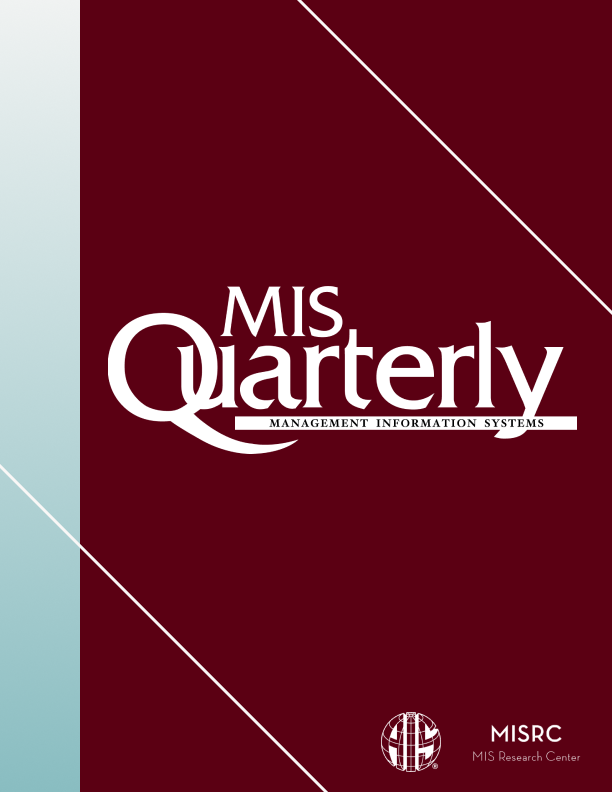数据是新的蛋白质:弗吉尼亚州如何建立数字弹性肌肉并从阿片类药物和COVID冲击中恢复过来
IF 6
2区 管理学
Q1 COMPUTER SCIENCE, INFORMATION SYSTEMS
引用次数: 1
摘要
在地震期间,居民和企业依靠政府来确保健康、安全和服务的连续性。政府的应对能力取决于它如何利用其数据资源和建立数字弹性。然而,政府往往无法整合来自不同机构的数据,以有效应对冲击。我们将数字弹性概念化为一种动态能力(DC)。尽管数据中心框架提供了理论基础,但尚不清楚管理人员可以采取什么行动来构建数据中心。通过过程追踪,我们研究了弗吉尼亚联邦(COVA)如何建立dc并从阿片类药物危机和COVID-19大流行这两大冲击中恢复过来。COVA管理人员利用全州范围的数据资产,构建例程来传播数据,并重新配置操作能力,以构建三个数据中心——关系构建、情报创造和价值提取。数据就像“蛋白质”一样,用来构建数字复原力的“肌肉”。我们发现,数据中心关系的建立利用了数据管理、集成和治理结构的运营能力来促进数据共享,数据中心利用分析创造智能,数据中心将分析转化为成本节约、创收和新服务的价值提取。COVA通过促进数据共享建立了强大的数字弹性,而各机构则利用数据资产开发可扩展的解决方案。本文章由计算机程序翻译,如有差异,请以英文原文为准。
Data is the New Protein: How the Commonwealth of Virginia Built Digital Resilience Muscle and Rebounded from Opioid and COVID Shocks
During shocks, residents and businesses rely upon the government to ensure health, safety, and the continuity of services. The government’s ability to respond depends upon how well it utilizes its data resources and builds digital resilience. Yet governments often fail to integrate data from different agencies to respond effectively to shocks. We conceptualize digital resilience as a dynamic capability (DC). Although the DC framework provides a theoretical basis, it is unclear what actions managers can take to build DC. Through process tracing, we examine how the Commonwealth of Virginia (COVA) built DCs and rebounded from two shocks—the opioid crisis and the COVID-19 pandemic. COVA managers leveraged statewide data assets, built routines to disseminate data, and reconfigured operational capabilities to build three DCs—relationship building, intelligence creation, and value extraction. Data functioned as the “protein” to build the digital resilience “muscle.” We found that the relationship building DC leveraged the operational capabilities of data management, integration, and governance structure to foster data sharing, the intelligence creation DC leveraged analytics, and the value extraction DC converted analytics into cost savings, revenue generation, and new services. Whereas COVA built robust digital resilience by facilitating data sharing, the agencies exploited data assets to develop scalable solutions.
求助全文
通过发布文献求助,成功后即可免费获取论文全文。
去求助
来源期刊

Mis Quarterly
工程技术-计算机:信息系统
CiteScore
13.30
自引率
4.10%
发文量
36
审稿时长
6-12 weeks
期刊介绍:
Journal Name: MIS Quarterly
Editorial Objective:
The editorial objective of MIS Quarterly is focused on:
Enhancing and communicating knowledge related to:
Development of IT-based services
Management of IT resources
Use, impact, and economics of IT with managerial, organizational, and societal implications
Addressing professional issues affecting the Information Systems (IS) field as a whole
Key Focus Areas:
Development of IT-based services
Management of IT resources
Use, impact, and economics of IT with managerial, organizational, and societal implications
Professional issues affecting the IS field as a whole
 求助内容:
求助内容: 应助结果提醒方式:
应助结果提醒方式:


